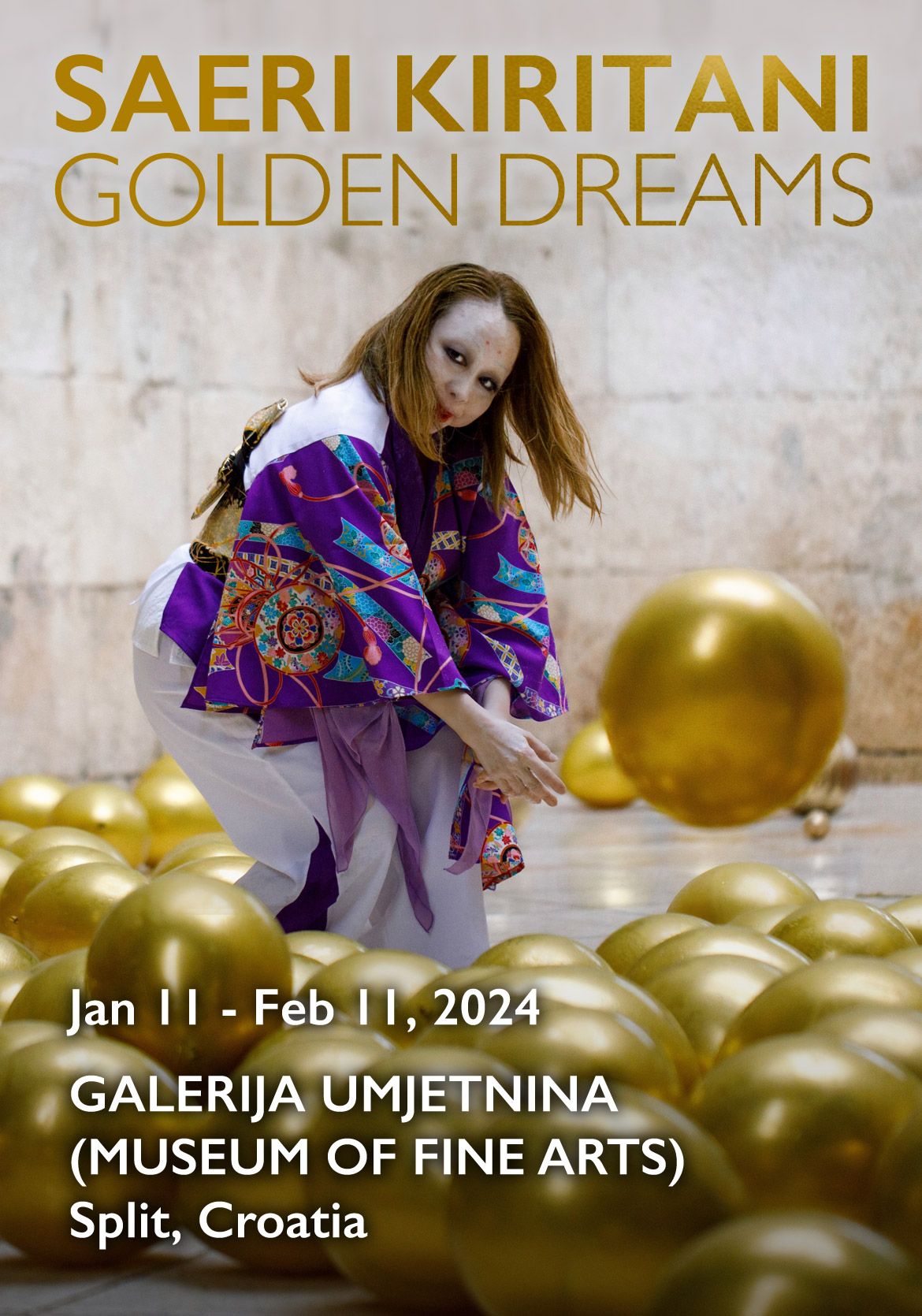Saeri Kiritani is a Japanese artist who, after spending several years pursuing her professional career in New York, has recently moved to Split, which will serve as the base for her artistic work in the coming years. Her body of work is grounded in performance, happenings, and related artistic disciplines, which she usually presents to the audience at exhibitions through video works and photographs captured during performative actions. These are then post-produced into various formats and configurations tailored to the staging of multimedia and site-specific installations. In terms of content, Kiritani focuses on the relationship between an individual and their immediate environment, often exploring the position of being a foreigner, unknown, or different. This involves individuals who live and create within a culture to which they do not belong in terms of origin, education, and upbringing, and in which they are perceived as outsiders or, broadly speaking, as'the other'.
At her second solo exhibition in Split, Saeri Kiritani showcases a multimedia installation titled Golden Dreams, realised through a synergy of video projections on monitors and photographic documentation of two recent site- and context-specific performances, conceived and executed as acts of engagement within the local urban culture. The performances were carried out through interaction with local associations and at locations emblematic and recognisable in Split's current branding as a global tourist attraction: a performance with Diocletian's legionnaires at the Golden Gate and with picigin players at Bacvice beach. Kiritani joined her local collaborators and environment with her performative alter ego, characterised by distinct elements of Japanese culture: a traditional kimono and distinctive white face makeup. The mediator in the orchestrated clash of two cultures is playing with golden balls, known in Japanese culture as kin-tama, carrying traditional symbolism of wealth and prosperity associated with the fertilising function of testicles. During the artist's performance with the local community, the abundant presence of golden balls strewn across widely recognised landmarks in Split primarily signifies how intercultural integration fosters the creative and existential prosperity of the local environment. On the other hand, by staging this performance at two locations representing globally renowned Split landmarks, Kiritani also highlights the destructive aspects of prosperity linked to the monoculture of tourism, a danger particularly affecting the quality of life and opportunities for those local community members who do not participate in it. As part of the exhibition layout, the golden balls scattered on the floor articulate the space between the videos and photographs of the performances. They function as mementos and physical connectors linking the exhibition space with the performance spaces. Most importantly, they offer visitors the opportunity to subsequently engage with them. In the context of prosperity symbolism, they can also be interpreted as a manifestation of the artist's understanding of the importance and role of artistic creation and institutions in the community's prosperity.
Through her performances, Kiritani, as a newcomer, addresses the people of Split with universally comprehensible symbolism of gold as an emanation and desire for all things good, bright, valuable, and powerful. In doing so, she demonstrates a profound understanding of key points of the local sense of belonging. She interacted with them first at a site that defines Split's urban history and then at the central space of physical connection between the citizens and the sea, and nature in general. Her performative language is based on cultural and gender stereotypes. On one side, she herself embodies the Japanese female performer, while on the other, local men dressed in costumes of Roman warriors with armour and weaponry in one performance, and almost nude men wearing only Speedos, in the other. Saeri Kiritani's Golden Dreams primarily manifest her desires to integrate into the life of her new city. However, when your disposition is artistic and artistic work is a means of communication, the message always refers to the complex structure of reality. Witty and bordering on provocative, yet in line with an ingrained sense of courtesy, Saeri Kiritani proved herself adept at the local batuda. Step by step, she has become both ours and her own, much like the sound of Dalmatian melody adapted to a traditional Japanese instrument, serving as the musical backdrop of the exhibition.
1 Picigin is a traditional volleyball game played in the shallows at Bacvice beach in Split.
2 Batuda (Dalmatian jargon) - clever retort, witticism.

